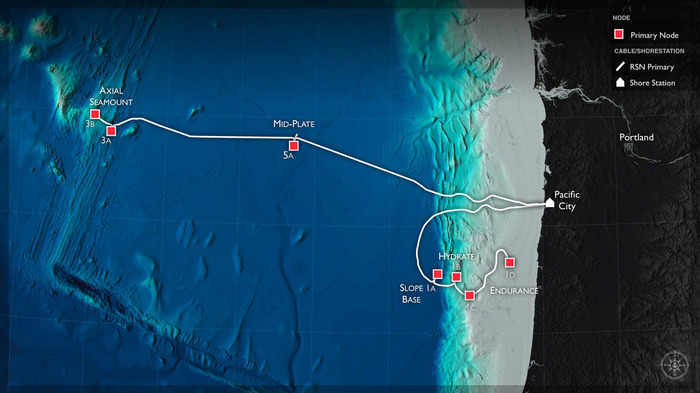Science Sites

Science sites range from nearshore to deep blue-water environments and were selected with broad input from the U.S. ocean science community.
The Regional Cabled Array is focused on experimental sites that span major components of the Juan de Fuca tectonic plate (e.g. the Juan de Fuca Ridge, Cascadia Subduction Zone, and Southern Hydrate Ridge), as well as numerous sites focused on major oceanographic processes that include upwellling along the continental margin, ocean acidification, and climate change. Two backbone cables (shown in red above) comprise 900 km of primary cable that connect 7 primary nodes (red boxes). These provide high power (10 kv) and communications (10 Gbs) to secondary infrastructure at the key work sites of interest. In 2013, during the VISIONS'13 Expedition, 22,000 m of extension cables were installed, three secondary junction boxes, and a variety of sensors that await connection to the Primary Infrastructure. In 2014, the entire system was completed, comprising >140 instruments on the seafloor and throughout the water column - all connected to the Internet via the backbond and terrestril cables with integration by the OOI Cyberinfrastructure.This submarine observatory is providing real-time transmission of geophysical, geological, chemical, and biological data to address high priority science questions critical to understanding process linkages within our oceans.

